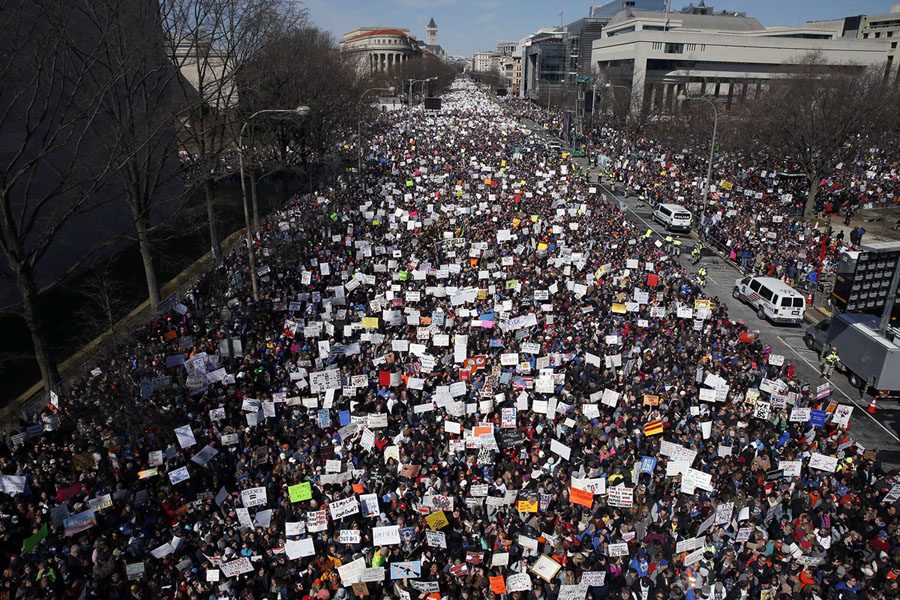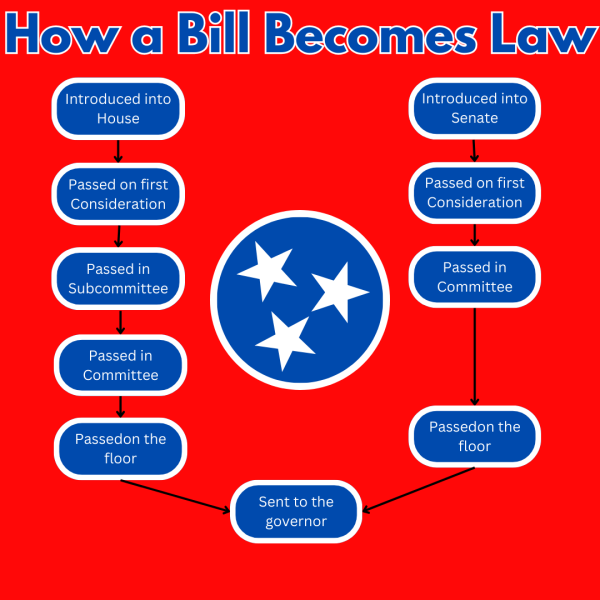Students skip school to demand climate change
“The number of record high temperature events in the United States has been increasing, while the number of record low temperature events has been decreasing, since 1950. The U.S. has also witnessed increasing numbers of intense rainfall events.” (NASA Climate Watch
Rights Reserved-Hillsboro Globe; Associated Press AP
Looking west, people fill Pennsylvania Avenue during the “March for Our Lives” rally in support of gun control, Saturday, March 24, 2018, in Washington. (AP Photo/Alex Brandon)
Check out NASA’a Interactive Climate Watch Site
Starting in the South Pacific to the edge of the Arctic Circle, students mobilized by social media and word of mouth skipped class Friday to protest what they believe are their governments’ failure to take tough action against global warming.
What is global warming? Global Warming is a gradual increase in the overall temperature of the earth’s atmosphere generally attributed to the greenhouse effect caused by increased by levels of carbon dioxide, chlorofluorocarbons, and other pollutants.
The rallies were one of the biggest international actions, yet. It involved thousands of students in more than 100 countries around the globe.

The “school strikes” were inspired by 16-year-old Greta Thunberg, nominated for Nobel Peace Prize and Swedish activist, began holding solitary demonstrations outside the Swedish parliament last year. Ever since then, the weekly protests went from a handful of cities to hundreds, fueled by dramatic headlines about the impact of climate change during the students’ lifetime. “Existential crisis, the biggest crisis humanity ever has faced, and still it has been ignored for decades by those that have known about it. And you know who you are, you that have ignored this and are most guilty of this,” said Thunberg during a rally.
What are the effects of global warming? Evidence on the NASA.gov website state, “The heat-trapping nature of carbon dioxide and other gases was demonstrated in the mid-19th century.2 Their ability to affect the transfer of infrared energy through the atmosphere is the scientific basis of many instruments flown by NASA.”
There is no question that increased levels of greenhouse gases must cause the Earth to warm in response. “Ice cores drawn from Greenland, Antarctica, and tropical mountain glaciers show that the Earth’s climate responds to changes in greenhouse gas levels. Ancient evidence can also be found in tree rings, ocean sediments, coral reefs, and layers of sedimentary rocks. This ancient, or paleoclimate, evidence reveals that current warming is occurring roughly ten times faster than the average rate of ice-age-recovery warming.”
Yet, there are still many who seek to make this growing problem a political issue instead of relying on its own governmental scientific evidence .
Global warming is projected to have a number of effects on the oceans. Ongoing effects include rising sea levels due to thermal expansion and melting of glaciers and ice sheets, and warming of the ocean surface, leading to increased temperature stratification. “The oceans have absorbed much of this increased heat, with the top 700 meters (about 2,300 feet) of ocean showing warming of more than 0.4 degrees Fahrenheit since 1969.2
These students and young adults, scientists and leaders marched because the issue is considered by many to be nearing a crisis state. They are trying to make a difference in the world, and by standing up for climate change they might just make their goal come true.
Its encouraging to students around the world, to sometimes “make laws you have break laws” in order to see change in something you believe.
In the 1860s, physicist John Tyndall recognized the Earth’s natural greenhouse effect and suggested that slight changes in the atmospheric composition could bring about climatic variations. In 1896, a seminal paper by Swedish scientist Svante Arrhenius first predicted that changes in the levels of carbon dioxide in the atmosphere could substantially alter the surface temperature through the greenhouse effect.
2. Levitus, S.; Antonov, J.; Boyer, T.; Baranova, O.; Garcia, H.; Locarnini, R.; Mishonov, A.; Reagan, J.; Seidov, D.; Yarosh, E.; Zweng, M. (2017). NCEI ocean heat content, temperature anomalies, salinity anomalies, thermosteric sea level anomalies, halosteric sea level anomalies, and total steric sea level anomalies from 1955 to present calculated from in situ oceanographic subsurface profile data (NCEI Accession 0164586). Version 4.4. NOAA National Centers for Environmental Information. Dataset. doi:10.7289/V53F4MVP
http://earthobservatory.nasa.gov/Features/GlobalWarming/page3.php
https://www.ncdc.noaa.gov/indicators/
http://www.cru.uea.ac.uk/cru/data/temperature
http://data.giss.nasa.gov/gistem
phttps://www.giss.nasa.gov/research/news/20170118/












